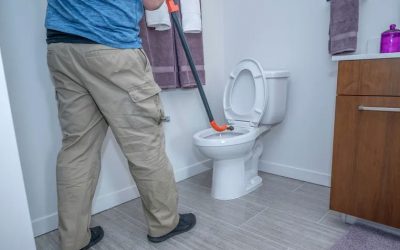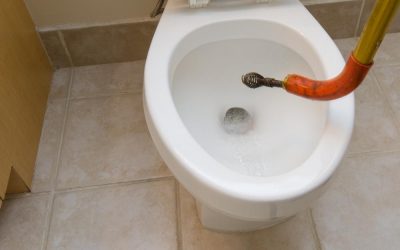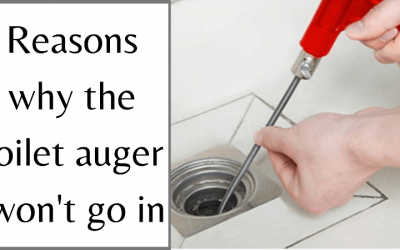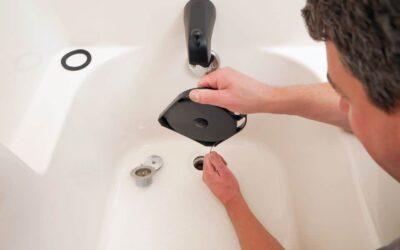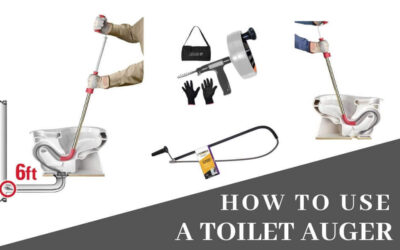Do you want to clear a drain that’s in a hard to reach place and you are probably wondering how to make a plumbing snake turn corners?
You’ve probably seen those snakes people use to clear clogged drains on TV. They easily coil themselves around the drain and then start slithering back and forth until the clog is gone.
The whole process looks pretty easy until you have to do it yourself.
Forcing a drain snake through a tight spot can be quite challenging especially when you don’t have enough room to maneuver the snake.
Fortunately, in this article, we will explain to you an easy way to make the plumbing snake turn corners so you wouldn’t have to keep coiling it back up.
But first of all, let us understand what a P Trap is, how it works and how it affects the de-clogging of the drainage system.
What is a P Trap, and how does it affect using a snake or auger?
A P trap is a U-shaped pipe that is installed underneath the sinks or in the toilet. The P Trap acts as a barrier and prevents methane gas from leaking from the drainage into your kitchen or bathroom by holding a small amount of water.
Gas from the drainage system can cause a smelly annoyance. Worse still, when households are exposed to these gases for a lengthy period, they can suffer from health issues not limited to headaches, sinuses and pneumonia.
If you notice a smell coming from the sink and toilet areas, call the plumber so that he can assess your P trap.
The P trap also collects other debris such as food and hair that are not soluble enough to drain. When you notice that the drain has become slow or does not drain the water, it means that the P trap has collected enough debris and is clogged.
Plumbing around the P trap can be very challenging because of its U-shape. That means that you will have to maneuver around the P Trap and the barrier underneath it for you to access the drainage pipes.
Here are a few pointers that could ease your job, especially if you have never used a drain snake before.
How to make a plumbing snake turn corners
Before we delve into this issue, let us understand what a drain snake is and how it works. The plumbing snake is a flexible auger that is used to dislodge clogs from the drainage system. The snake is attached to a long, flexible metal cable, and the cable is attached to a crank. There are different types and sizes of drain snakes, so make sure that you are using the right auger for the job.
When using the snake, insert it on the drain and push it slowly without forcing it. The right size will slide smoothly through your drain pipe and only stop if it comes across a clog or a corner.
When it hits a clog, the snake’s head will collect the clog and continue sliding across the clog. P traps and corners are some of the most challenging places to use a snake, so how do you get around them?
1. How to get snake past the P trap
Forcing the drain snake around your U-shaped P trap could cause more harm than good. If you are not sure about yourself, the best alternative is to remove the P trap, clean it separately and fix it back.
However, If you choose to use a snake on your P trap, make sure to use a toilet auger. If your drains are metal, consider running a drain cleaner through to clear any debris. Use hot water if the drainage is made up of Polyvinyl Chloride (PVC) as chemicals in the drain cleaner could damage the PVC.
Rotate the snake as you push it through the pipe. While you might be required to apply pressure, make sure that you do not put too much pressure and damage the pipes.
Maintain a steady pressure when the snake is jammed on corners and rotate the snake using anticlockwise movements before pushing forward. If the P trap is still clogged after this, consider calling a professional plumber.
2. How to snake past the 90-degree bend or turn in a drain
Plumbers recommend that drainage corners should not be more than 45 degrees. Not only are the 90 degree angles hard to maneuver, but it is also more likely that the drainage will clog on these areas.
For 90 degrees corners, you might need to unfasten the individual corners forming the angle and clean them separately, pretty much the same treatment as the P trap.
You may also choose to approach the corners by pushing the snake’s head towards the direction of the intersection. This process will be slow, and you need to be patient. Run water through the drain to clear any clog that the snake head has not caught.
How do you rotate a drain snake to pass through corners?
When you are unclogging a corner, reposition the auger to face the corner. Rotate the crank anticlockwise. Then push forwards with clockwise rotations while moving the snake towards the direction of the corner. For example, if the intersection faces the left, turn the crank to the right, and the snake will face the left.
A drain snake is designed to move around corners. If you are patient and work slowly, it will go through the corners. However, you may need to push a little harder around the corners.
It is the head of the snake that is doing the hard job. If you feel a clog, keep tugging at it until it loosens. You may then pull the drain snake and check the head. If the clog won’t come out, it simply means that it could be metal corrosion, which happens when the drainage pipe is made of metal.
See also: How to Remove foreign object stuck in toilet
Conclusion
Most clogging in the domestic drainage system can be cleared using a plunger. However, for more complicated cases, you might want to find out how to make a plumbing snake turn corners.
The good news is that as long as you have the right auger, you can follow through with simple steps and unclog your drainage.
The most challenging parts are the drainage corners and the P trap. In these areas, gently apply pressure, keep moving forward and let the snake’s head do the work. Rotate the crane clockwise when you want the snake to move forward and anticlockwise when moving it backwards.
If the system is still clogged after this, get the services of a professional plumber.

